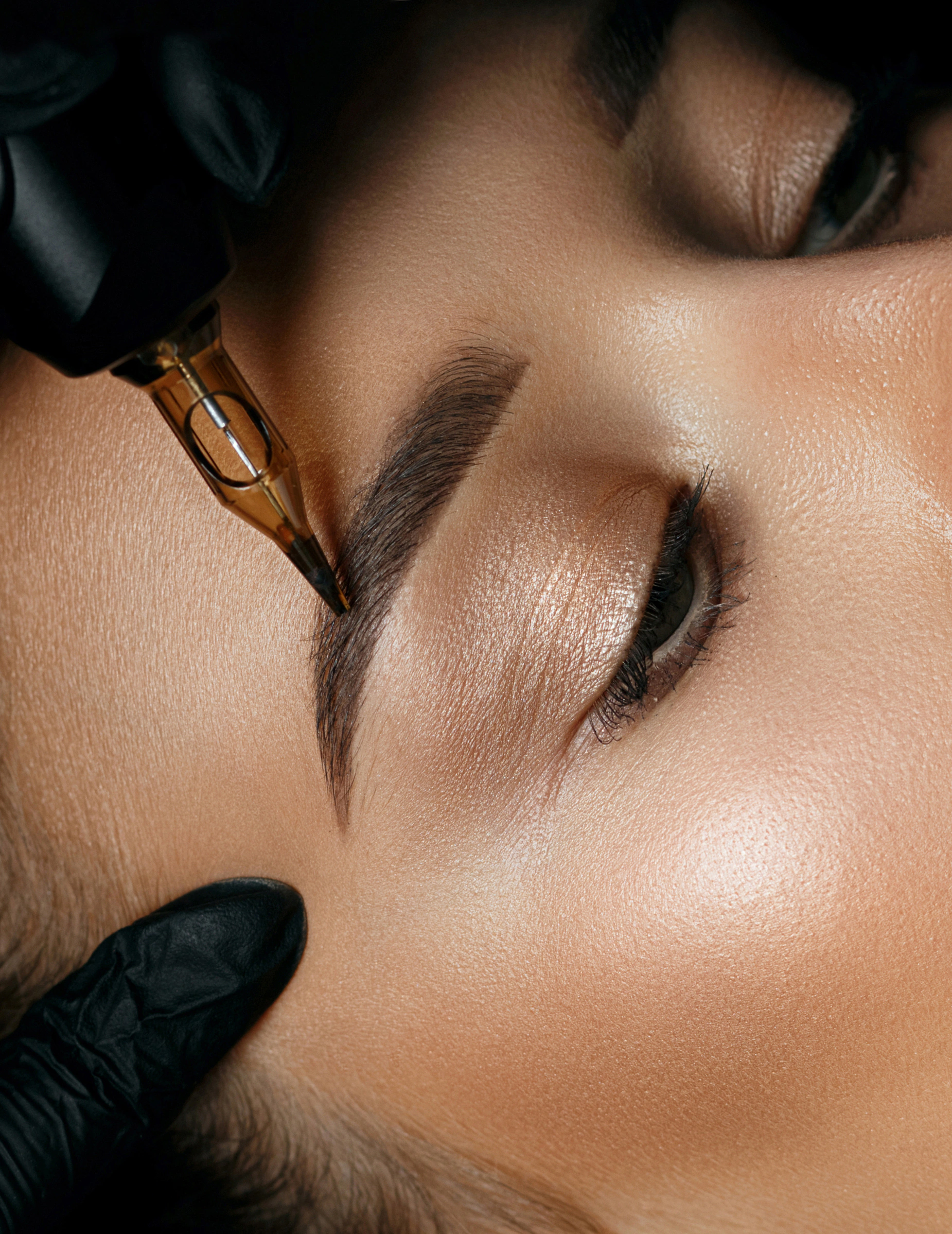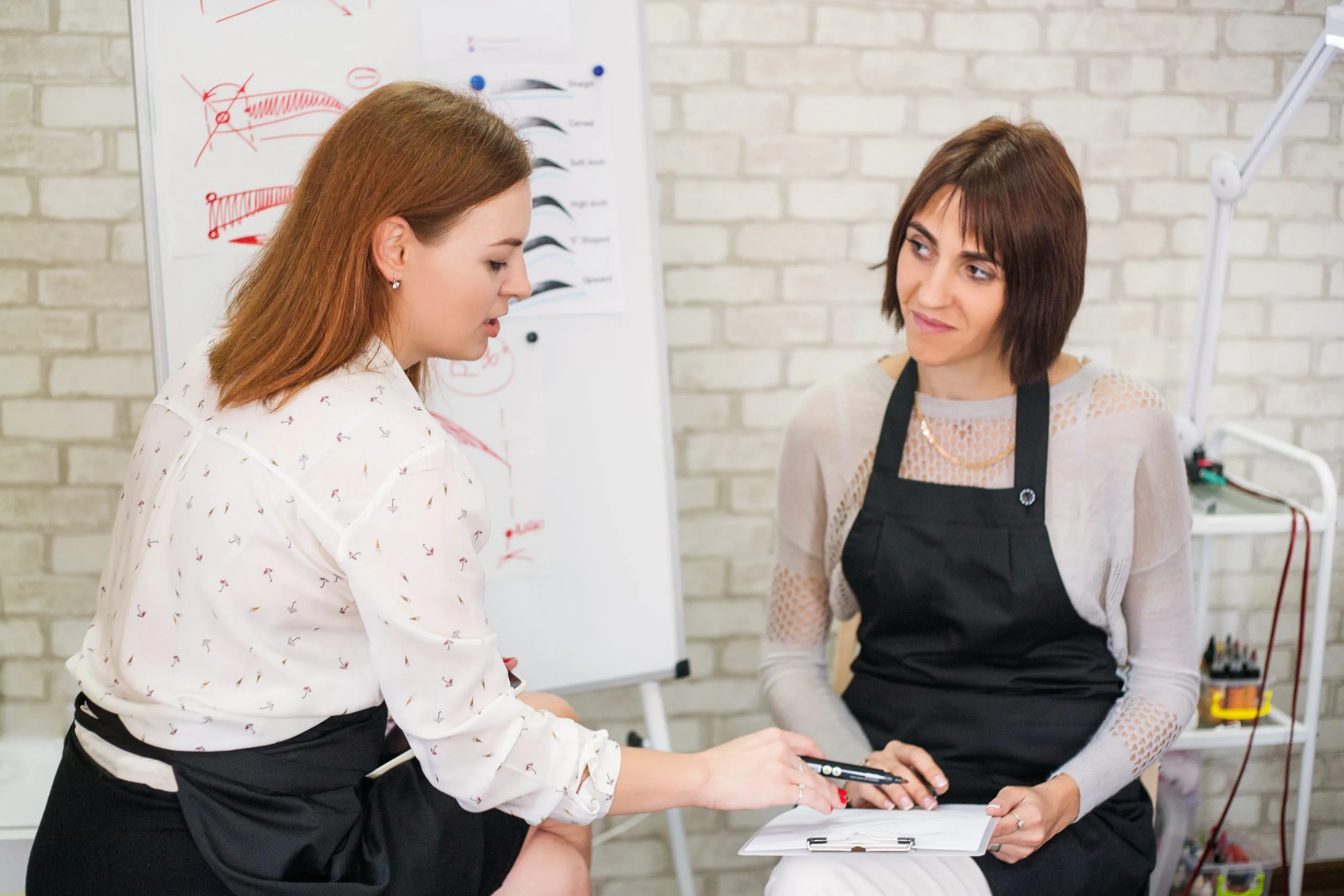Microblading: The Secret to Naturally Beautiful Brows
Once upon a time, waking up with naturally beautiful brows was a distant dream for women. But thanks to technological advancements, that dream is now a reality. Microblading is a semi-permanent makeup technique that creates the appearance of natural hair strokes using a specialized pen. It has become increasingly popular in recent years, as it offers a more natural and long-lasting solution than traditional brow makeup products.
We have checked out and put together everything you need to do before and after microblading.
Origins of Microblading
Microblading for eyebrows is known by various names such as microstroking, micropigmentation, eyebrow embroidery, eyebrow feathering, and 3D eyebrows.
Even though microblading is new in the United States, it has been a popular practice in parts of Asia and Europe for around 25 years.
The popularity of microblading is on the rise in the United States. While it might seem like it is a bit late to the party, this delay has been beneficial. It allowed the techniques to evolve and improve since its introduction.
Microblading
A microblade tool looks a bit like an exacto knife, but instead of having one big blade, it consists of a series of micro needles. The microblade is dipped into a chosen pigment color and then used to make fine cuts, or microstrokes, in the skin.
This process implants the pigment into the skin, a technique known as micropigmentation. When done with the right technique, microbladed eyebrows look beautiful and entirely natural.
Microblading Before Care
Before your microblading session, take the following precautions:
Exercise Caution:
- Refrain from engaging in intense workouts for at least 24 hours before your microblading appointment. Exercise can increase blood flow and may affect the procedure.
Caffeine and Alcohol Abstinence:
- Say no to alcohol and caffeine, and this includes decaf coffee and tea, for a minimum of 48 hours (about 2 days) before your microblading session. Both substances can contribute to increased sensitivity and potential bleeding.
Sun and Tan Avoidance:
- Avoids sun exposure and tanning activities for at least one week prior to your microblading appointment. Sunburn or tanned skin can affect the outcome and healing process.
Medication Precautions:
- Avoid certain medications known to increase bleeding, such as Aspirin, Niacin, Vitamin E, Advil/Ibuprofen, Fish Oil, Prenatal Vitamins, Nutritional Shakes, and “Hair, Skin, Nail” supplements for 48 hours (about 2 days) before your microblading session.
Retin-A Discontinuation:
- If you use Retin-A, discontinue its use at least 4 weeks before your microblading appointment. Additionally, avoid applying Retin-A to the eyebrow area after the procedure, as it may interfere with healing.
Avoid Alpha Hydroxy Acid (AHA) Products:
- Refrain from using any Alpha Hydroxy Acid (AHA) products close to the eyebrow area for a period of 2 weeks leading up to your microblading session. This precaution extends to the post-procedure period to facilitate proper healing.
Injectables Timing:
- If you do not regularly receive injectables like Botox or filler on the forehead, temple, and eye area, it is advisable to avoid these treatments for at least one month before your microblading session. This minimizes any potential interference with the microblading process.
Natural Brow Preparation:
- One week before your microblading appointment, refrain from activities such as brow waxing, tinting, or threading. Allowing natural hair growth contributes to a more favorable microblading outcome.
Facial Treatment Caution:
- Avoid undergoing Chemical Peels, Microdermabrasion, or facials for a duration of 4 weeks leading up to your microblading session. These treatments can impact the skin’s condition and affect the microblading process.
Menstrual Cycle Sensitivity:
- Be aware that you may experience increased sensitivity during your menstrual cycle. Plan your microblading appointment accordingly to ensure a more comfortable experience.
Hydrate Well:
- Ensure you are well-hydrated in the days leading up to your session. Hydrated skin tends to respond better to cosmetic procedures.
Avoid Smoking:
- If you smoke, try to refrain from smoking for at least 48 hours (about 2 days) before your microblading appointment. Smoking can affect the healing process.
Gentle Skincare Routine:
- Stick to a gentle skincare routine in the days before your microblading. Avoid harsh products that may irritate the skin.
Communicate Allergies:
- Inform your microblading artist of any known allergies you may have to ensure a safe procedure.
Plan Transportation:
- Arrange for transportation to and from your appointment, especially if you will be receiving a numbing agent that could affect your ability to drive.
Microblading after care instructions:
To ensure optimal healing and lasting results, follow these after microblading care instructions:
Cleanse Gently:
- Use a natural, fragrance-free gel cleanser like Cetaphil and water to keep the brow area clean. Ensure your hands are freshly cleaned. Avoid abrasive washcloths or sponges.
Air Dry Thoroughly:
- Allow your eyebrows to completely air dry before applying the recommended aftercare ointment. Use freshly washed hands or a Q-Tip for application.
Hands off Policy:
- Resist the urge to rub, pick, or scratch the treated area. Let any scabbing or dry skin naturally exfoliate off to prevent scarring and pigment loss.
Sun Protection:
- Completely avoid direct sun exposure and tanning beds for a minimum of 4 weeks post-procedure. Sunlight can alter pigment color during healing, leading to hyperpigmentation and scarring.
Steer Clear of Heat:
- Avoid pools, saunas, steam rooms, hot showers, and hot baths for 3 weeks. Also, refrain from activities causing sweating for a full 10 days (about 1 and a half weeks) to prevent pigment expulsion and ensure optimal results.
Sleeping Positions:
- Avoid sleeping on your face or brows for the first 10 days (about 1 and a half weeks). Keep bangs and hair pulled back from your face during this period.
Makeup and Skincare Hiatus:
- Do not use any makeup or skincare products on the treated area for two weeks. Give your brows the time they need to heal properly.
Facial Treatment Avoidance:
- Avoid facials, chemical treatments, and microdermabrasion for a duration of 4 weeks to prevent interference with the healing process.
Botox Delay:
- Refrain from Botox treatments for 4 weeks. It is advisable to wait until your touch-up heals, as your new brows should be considered in the injection process.
Sunblock After Healing:
- After 10 days (about 1 and a half weeks), once the area has fully healed, consider using sunblock when going out in the sun to prevent color fading.
Eyebrow Tinting Caution:
- Avoid eyebrow tinting for 2 weeks after your microblading procedure.
Avoid Certain Skincare Treatments:
- Steer clear of Retin-A, chemical peels, and microdermabrasion around the brow area once healed.
Minimize Water Exposure:
- During the initial healing period, water exposure to the brow area is minimized. Avoid excessive splashing or submerging your face in water, as this can interfere with the healing process.
Avoid Excessive Touching:
- Resist the temptation to excessively touch or manipulate your brows during the healing phase. Keeping hands off the treated area helps prevent infection and ensures optimal healing.
Inform Your Skincare Professional:
- If you regularly visit a skincare professional, inform them about your recent microblading procedure. This ensures they can adapt their treatments to accommodate the healing needs of your brows.
Please note that eyebrows may appear darker and bolder during the first two weeks due to the natural healing process. This is typical for all permanent cosmetic procedures.
Who should avoid permanent makeup?
Permanent makeup is not an innovative idea for people who:
Pregnant or Nursing:
- If you are pregnant or breastfeeding, it is best to skip permanent makeup.
Diabetic:
- If you have diabetes, permanent makeup might not be suitable for you.
Viral Infections or Diseases:
- If you currently have a viral infection or disease, it is better to avoid permanent makeup.
Epilepsy:
- If you have epilepsy, permanent makeup is not recommended.
Heart Issues:
- If you have a pacemaker or significant heart problems, permanent makeup is not an excellent choice.
Organ Transplants:
- If you have had an organ transplant, it is best to avoid permanent makeup.
Keloid Scarring Tendency:
- If you tend to get keloid scars, permanent makeup might not be suitable.
Skin Conditions:
- If you have skin issues like seborrheic dermatitis or irritations near the area to be treated, it is better to avoid permanent makeup.
Sickness:
- If you are currently sick with a cold or flu, it is recommended to postpone permanent makeup.
Recent Botox:
- If you have had Botox in the last two months, wait a bit before considering permanent makeup.
Upcoming Events:
- If you have vacations or special occasions coming up, it is better to wait for permanent makeup.
Recent Accutane Use:
- If you have used Accutane in the past year, it is not the right time for permanent makeup.
Allergic to Anesthetic:
- If you are allergic to the numbing agent (Lidocaine), permanent makeup might not be suitable.
Very Oily or Problematic Skin:
- If you have extremely oily or problematic skin, permanent makeup may not be the best choice.
Important notice:
If you are thinking about getting Microblading for a special event like a vacation, wedding, or any big day, it is smart to book your appointment 3-4 months beforehand. This gives your brows enough time to heal after the first session and a follow-up session 6-8 weeks (about 2 months) before your event. Getting dream brows takes more than one session, and some people need more than two to get the perfect look. Planning ensures your brows look amazing for your special occasion.
FAQs
What are the various names for eyebrow microblading?
Eyebrow microblading goes by different names such as microstroking, micropigmentation, eyebrow embroidery, eyebrow feathering, and 3D eyebrows.
How long has microblading been practiced globally?
Microblading has been a popular practice in parts of Asia and Europe for approximately 25 years.
Why is microblading gaining popularity in the United States now?
Although microblading is new in the United States, its recent surge in popularity is allowing for continuous improvement and evolution of techniques.
What does the microblading tool look like, and how does it work?
The microblade tool resembles an exact knife but with a series of micro needles. It is dipped into a pigment color and used to create fine cuts, or microstrokes, in the skin, implanting the pigment through a process called micropigmentation.
What results can be expected from microblading before and after?
When performed with the right technique, microbladed eyebrows look beautiful and entirely natural. The procedure aims to achieve well-defined, realistic-looking brows that enhance facial features.
References
- Ibraheim, M. K., Desai, M., Tawfik, M., Elsensohn, A., & Furukawa, B. (2023). Microblading-Induced Granulomatous Reaction: Case Report and Review of the Literature. The American Journal of Dermatopathology, 45(7), 487-491.
- Haney, B., & Haney, B. (2020). Permanent and semi-permanent micro-pigment treatments. Aesthetic Procedures: Nurse Practitioner’s Guide to Cosmetic Dermatology, 59-66.
Keywords: Microblading Before and After, microblading before and after








